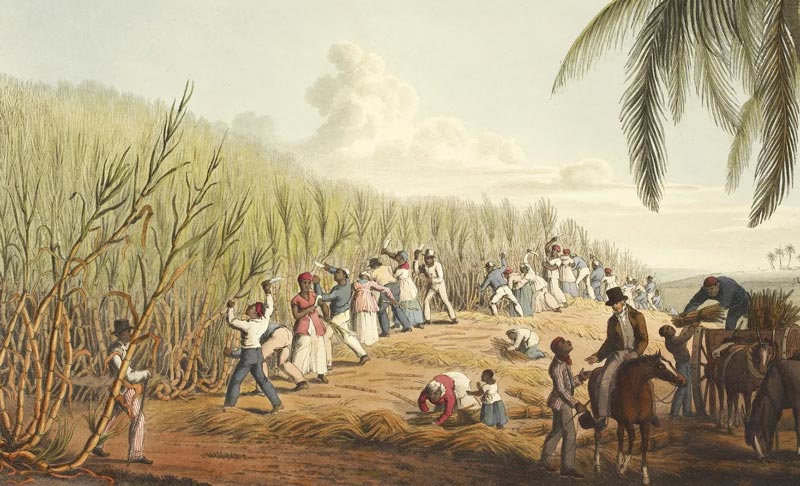
According to the United Nations, in the first nine months of this year, 3,000 homicides were reported in Haiti, 1,500 people were kidnapped for ransom, and 200,000 had to flee their homes due to safety risks. Sexual violence against women and girls at the hands of gangs is rising, and children are unable to go to school.
It’s likely that as you read this, you can’t remember a time when Haiti was not in a state of turmoil. Poverty, starvation, violence and corruption seem to be the norm. Why is this? How can thousands of tourists flock to paradise at resorts on the eastern side of the island while the western half lives in abject poverty and chaos?
The climate changed…
Beginning in 1645, the Atlantic Ocean and Caribbean Sea experienced 70 years of fewer hurricanes due to a period of cooling called the Maunder Minimum. With the threat of shipwrecks minimized, Spain and France took full advantage of calmer seas to expand their fortunes into the island of Hispaniola. They divided it into what would become Haiti and the Dominican Republic. In this tropical environment, they could finally produce in quantity what Europe was becoming addicted to — sugar.
But sugar plantations require grueling labor. After the island’s original “Taina” people were decimated in forced labor, nearly 800,000 African people were enslaved and shipped to replace them. A complex caste system based on skin color emerged that went on to cause infighting among Haitians for hundreds of years.
In the meantime, deforestation and over farmed plantation land led to an unhealthy ecosystem that in the future would make natural disasters even more destructive.
Costly Freedom
Encouraged by the French Revolution in the late 1700s, Haitian people fought for and won their independence from France in 1804, making them the first independent nation of Latin America and the Caribbean, the first country in the Americas to abolish slavery and the only state in history created by a slave revolt.
As punishment, France refused to recognize Haiti as a country, cutting off its ability to trade and thrive. Fearful of slave revolts in their own countries, the Western world followed suit. Teetering on economic and political ruin after a series of corrupt and weak leaders, in 1825, Haiti was forced to negotiate a hefty payment to France as an indemnity — meaning Haitians had to pay off their enslavers for their loss of slaves (themselves). In turn, France recognized the Republic of Haiti and restored trade. This financial burden is what has held Haiti back from developing a healthy economy to this day.
Forced to take loans from French banks over generations with interest and commissions for French bankers, Haiti’s debt doubled! Haitians were deprived of this revenue that could have built schools, hospitals and infrastructure, and they were forced into a cycle of debt, poverty and underdevelopment that persists.
It took until 1947 for Haiti to finally pay off the indemnity. It is estimated that had the money remained in the Haitian economy over the last 200 years, it would have added at least $21 billion, or more likely upwards of $115 billion to the nation.
Haiti didn’t get here on its own
Created to serve the desires of powerful countries — so that Europe could put sugar in its tea, then in spite, robbed of its ability to provide for itself — Haiti exists in an eternally vulnerable state. Struggling in this aftermath, Haitians have become strong, resilient and unimaginably joyful. The Felician Sisters serve alongside Haitians in a ministry of presence, listening to the people to learn their needs and providing what they can with the help of all who offer support to Felician Mission: Haiti. Until they find their way, the Felician Sisters and generous people who support their mission, continue to stand with Haiti.




